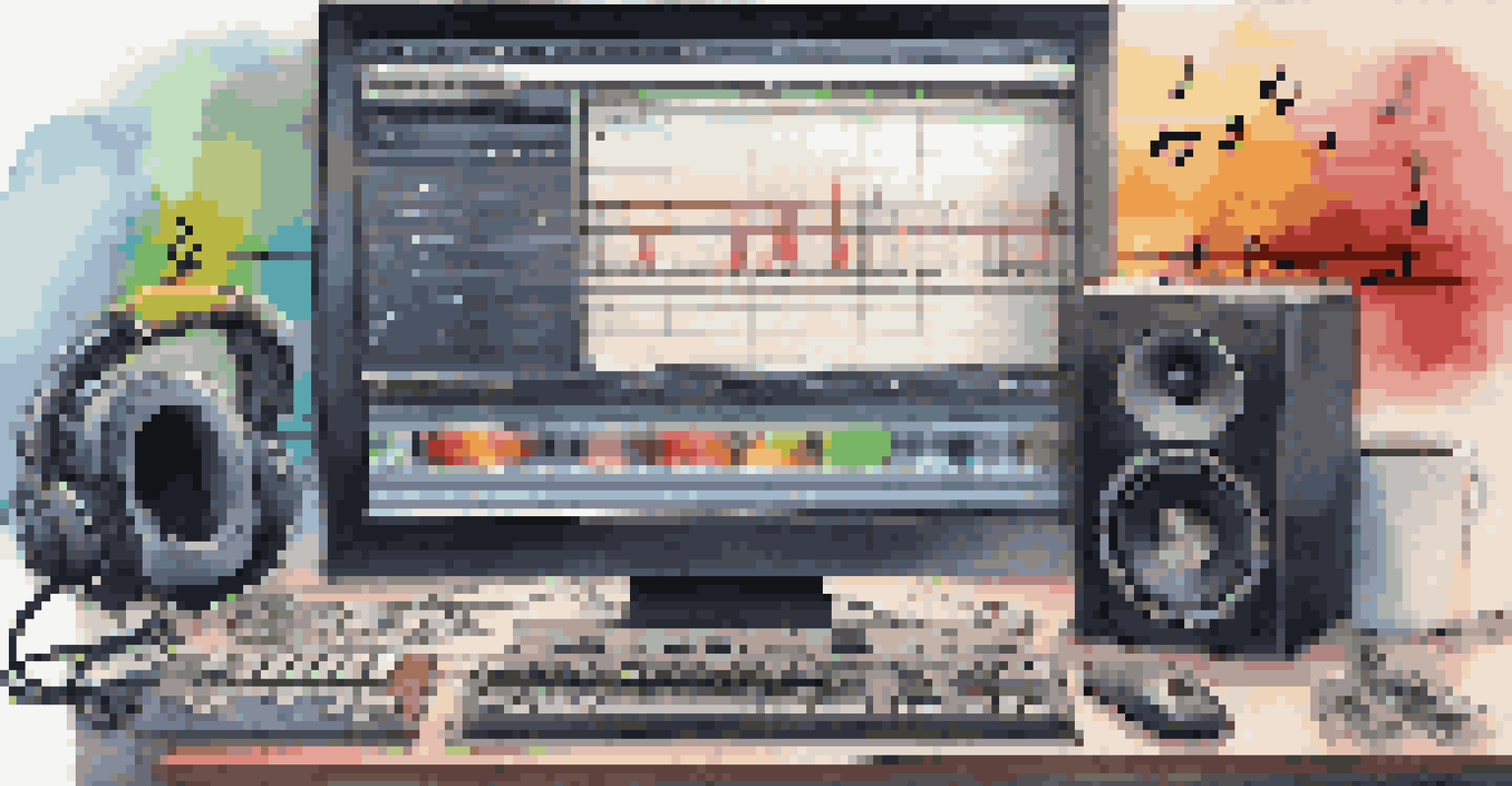Exploring the World of Sync Licensing for Musicians

What is Sync Licensing and Why Does It Matter?
Sync licensing refers to the process of getting your music placed in various media, like films, TV shows, and commercials. This allows your songs to reach broader audiences while creating new revenue streams for you as an artist. It's essential to understand that when your music is synced with visual media, it enhances the storytelling experience, making it more impactful.
Music can change the world because it can change people.
For example, think of a heartwarming scene in a movie where a soft melody plays in the background. That music is likely licensed through sync, adding depth to the moment. As a musician, tapping into this realm can significantly boost your exposure and credibility in the industry.
Moreover, sync licensing can lead to significant financial benefits. Each time your song is used, you can earn a fee, and in some cases, royalties every time the media is played. This makes it a lucrative opportunity for musicians looking to expand their horizons.
How to Get Started with Sync Licensing
Getting started in sync licensing can feel daunting, but it doesn't have to be. The first step is to ensure your music is professionally recorded and mixed; high-quality production is key. Once you have polished tracks, you can start building a catalog that showcases your versatility across different genres.

Next, consider creating a demo reel specifically for licensing opportunities. This could include snippets of your best tracks, highlighting their potential in various media contexts. Think of it like a resume for your music—showcasing why your songs are a perfect fit for sync.
Lastly, network with industry professionals, such as music supervisors and licensing agents. Attend music conferences, join online forums, and leverage social media to connect with these individuals. Building relationships in this space can open doors to sync opportunities you might not have found otherwise.
Understanding the Types of Sync Licenses
Sync licensing comes in several forms, each serving different purposes. The most common types include film sync licenses, TV sync licenses, and commercial sync licenses. Each of these licenses has specific terms and conditions, affecting how and where your music can be used.
The role of a music supervisor is to find the perfect song for every scene and make the music part of the storytelling.
For instance, a film sync license allows your music to be used in a movie, while a TV sync license covers the use in television shows or commercials. Understanding these categories can help you tailor your pitch and negotiate better deals. Think of it as knowing the rules of a game before you play.
Additionally, there are also master and synchronization rights to consider. The master rights pertain to the original recording of your song, while sync rights relate to the composition itself. It's essential to have a clear understanding of both to avoid legal pitfalls down the line.
The Role of Music Supervisors in Sync Licensing
Music supervisors are the gatekeepers of sync licensing, acting as the bridge between artists and content creators. They are responsible for selecting the perfect tracks to enhance visual media, making their role crucial in the licensing process. Building a good relationship with music supervisors can significantly increase your chances of getting your music synced.
When pitching your music to a supervisor, it's essential to provide them with all necessary details, including the mood of the song and potential usage scenarios. Think of them as storytellers looking for the right sound to complement their narratives. The clearer you are about your music's strengths, the easier it will be for them to envision it in their projects.
Moreover, music supervisors often have tight deadlines, so being responsive and accommodating can set you apart. If they know they can count on you for quick turnarounds, they might be more inclined to consider your music for future projects.
Key Platforms to Explore Sync Licensing Opportunities
There are various platforms available for musicians to explore sync licensing opportunities. Websites like Musicbed, Artlist, and Epidemic Sound offer avenues for artists to submit their music for potential sync placements. Each platform has its unique approach, so it’s crucial to find the one that resonates with your artistic style.
These platforms often curate music libraries for filmmakers and content creators, making it easier for them to discover new talent. By joining these platforms, you can gain exposure to a wide range of projects, from indie films to major advertising campaigns.
Additionally, don’t overlook the power of social media and networking groups. Many music supervisors and producers scout for new music on platforms like Instagram and LinkedIn. Engaging with these communities can lead to direct sync licensing opportunities that may not be listed on traditional platforms.
The Importance of Metadata in Sync Licensing
Metadata might sound like a technical term, but it’s essentially the information that accompanies your music files. This includes details like the song title, artist name, genre, and contact information. Proper metadata is crucial in sync licensing because it helps music supervisors easily find and identify your tracks.
When submitting your music for sync opportunities, ensure that your metadata is complete and accurate. Imagine a music supervisor sifting through hundreds of submissions—clear and organized metadata can make your submission stand out. It's like having a well-labeled file folder in a sea of messy papers.
Moreover, including relevant keywords in your metadata can improve your chances of being discovered. Think about how your music fits into various themes or moods, and use these terms strategically. The more accessible your music is, the better chance you have of landing that coveted sync placement.
Common Mistakes to Avoid in Sync Licensing
While exploring sync licensing opportunities, it's easy to make mistakes that could hinder your success. One common pitfall is not reading contracts thoroughly before signing. Licensing agreements can be complex, and overlooking key details can lead to unfavorable terms or lost rights to your music.
Another mistake is failing to tailor your pitches. Sending generic emails or submissions can diminish your chances of getting noticed. Personalizing your approach to each music supervisor shows that you understand their needs and increases the likelihood of a positive response.

Lastly, don’t underestimate the importance of follow-ups. If you haven’t heard back after a submission, sending a polite follow-up can remind the supervisor of your music and keep the conversation going. Just like in any relationship, communication is key to building connections in the sync licensing world.